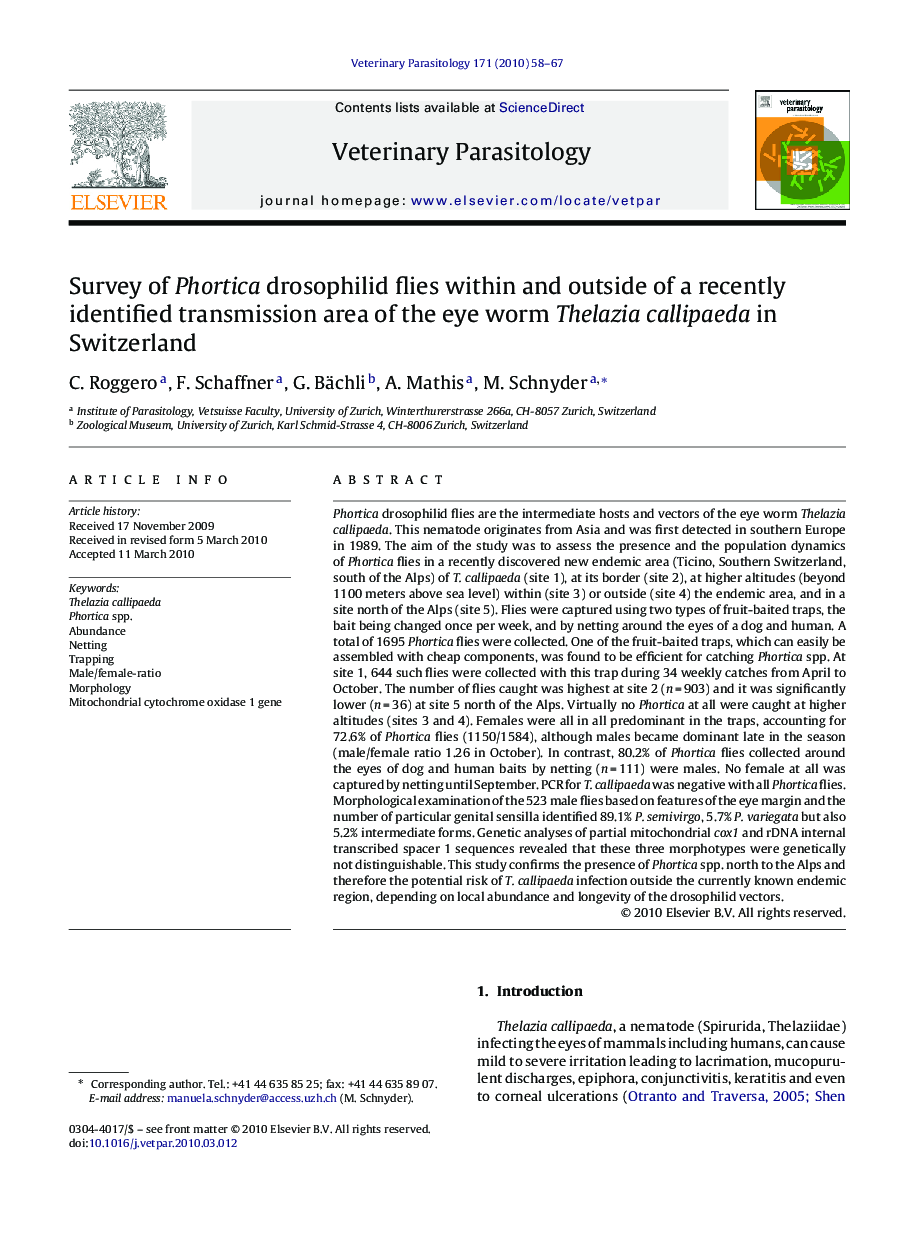| Article ID | Journal | Published Year | Pages | File Type |
|---|---|---|---|---|
| 2470644 | Veterinary Parasitology | 2010 | 10 Pages |
Phortica drosophilid flies are the intermediate hosts and vectors of the eye worm Thelazia callipaeda. This nematode originates from Asia and was first detected in southern Europe in 1989. The aim of the study was to assess the presence and the population dynamics of Phortica flies in a recently discovered new endemic area (Ticino, Southern Switzerland, south of the Alps) of T. callipaeda (site 1), at its border (site 2), at higher altitudes (beyond 1100 meters above sea level) within (site 3) or outside (site 4) the endemic area, and in a site north of the Alps (site 5). Flies were captured using two types of fruit-baited traps, the bait being changed once per week, and by netting around the eyes of a dog and human. A total of 1695 Phortica flies were collected. One of the fruit-baited traps, which can easily be assembled with cheap components, was found to be efficient for catching Phortica spp. At site 1, 644 such flies were collected with this trap during 34 weekly catches from April to October. The number of flies caught was highest at site 2 (n = 903) and it was significantly lower (n = 36) at site 5 north of the Alps. Virtually no Phortica at all were caught at higher altitudes (sites 3 and 4). Females were all in all predominant in the traps, accounting for 72.6% of Phortica flies (1150/1584), although males became dominant late in the season (male/female ratio 1.26 in October). In contrast, 80.2% of Phortica flies collected around the eyes of dog and human baits by netting (n = 111) were males. No female at all was captured by netting until September. PCR for T. callipaeda was negative with all Phortica flies. Morphological examination of the 523 male flies based on features of the eye margin and the number of particular genital sensilla identified 89.1% P. semivirgo, 5.7% P. variegata but also 5.2% intermediate forms. Genetic analyses of partial mitochondrial cox1 and rDNA internal transcribed spacer 1 sequences revealed that these three morphotypes were genetically not distinguishable. This study confirms the presence of Phortica spp. north to the Alps and therefore the potential risk of T. callipaeda infection outside the currently known endemic region, depending on local abundance and longevity of the drosophilid vectors.
